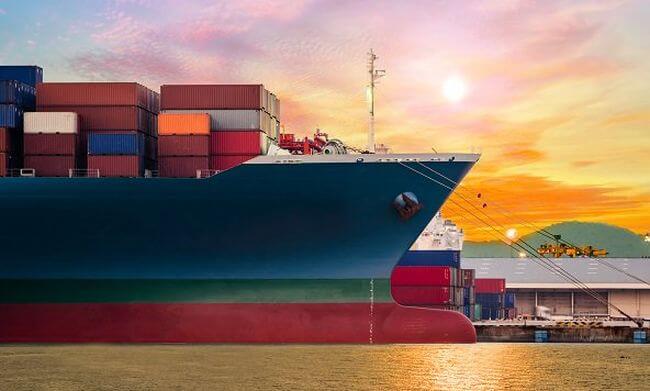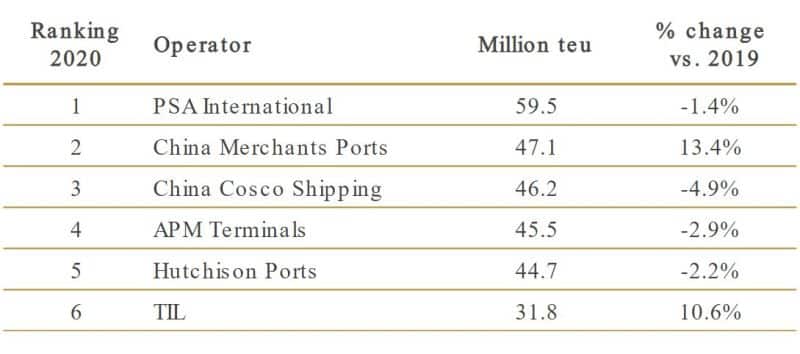
[ad_1]

Surging container shipping cargo demand in the wake of the pandemic has resulted in a significant improvement in the global terminal capacity outlook, but this may not be sufficient to support forecast traffic levels, according to the latest Global Container Terminal Operators Annual Review and Forecast report published by global shipping consultancy Drewry.

Image Credits: DrewryShipping – Twitter
Drewry’s annual survey of the world’s leading terminal operators reveals the resilience of the sector to external shocks. Volumes, in the main, were down, but earnings less so as operators moved quickly to control costs. Capital expenditure was reined in during 2020, but the outlook is much improved.
Eleanor Hadland, author of the report and Drewry’s senior analyst for ports and terminals said: “The strength of the recovery in demand, aided by high levels of liquidity in the financial market, have enabled operators to bring forward their investment plans, resulting in a stronger capacity outlook post-pandemic.”
Changes to Drewry’s global port capacity forecast

Source: Drewry’s Global Container Terminal Operators Annual Review and Forecast 2021/22
Global container port capacity is projected to increase by an average 2.5% per year to reach 1.3 billion teu in 2025. With global demand set to rise by an average 5% per annum over the same period, average utilisation rates will increase from the current 67% to over 75%. While 75% utilisation at a port or terminal level is not sufficiently high to be of major concern, at a global level this expectation of tightening port capacity in a market plagued by congestion due to supply chain imbalances is a cause for concern.
The majority of the forecast additional capacity will be delivered at existing terminals, with greenfield projects still remaining a low priority for most global operators. There are fewer greenfield automation projects in the pipeline, but retrofitting of existing terminals is on the rise. The leading operators are also investing in digitalisation, recognising that this can increase the speed of movement of boxes through their facilities. Neutral trade platforms such as Trade Lens and GSBN use blockchain technology to streamline the regulatory and financial flows associated with the cargo.
“Improving cargo flow is key,” added Hadland. “If via the roll-out of blockchain-based technology GTOs can achieve higher volumes over the same asset base, this will drive improved returns on investment.”
M&A has also proved resilient, with global terminal operators (GTOs) and financial investors remaining active in the market. A number of carriers have continued to divest assets, preferring to secure capacity and performance levels via long-term terminal service agreements. The financial sector remains a willing investor, attracted by stable long-term cashflows, especially if the vendor provides a volume guarantee.
Looking back at 2020, the group of 21 companies classified by Drewry as GTOs, were not immune from the market challenges imposed by Covid-19, with combined equity-adjusted volumes falling 0.8% compared to a global reduction in port handling of 1.2%. These leading operators now handle over 49% of the global port volumes on an equity-adjusted basis, up from 45.6% in 2015.
China Merchants Ports moved up to second place in the Drewry rankings in 2020, following a 13.4% increase in equity-adjusted volumes. Volume growth was derived from the company’s shareholdings in other operators – Terminal Link, the CMA CGM / China Merchants JV, acquired eight terminals at end of 1Q20 from CMA Terminals which provided a major boost, together with increased contribution from Liaoning Port Group and Ningbo Zhoushan Port Company.
TIL also reported strong growth in 2020, on the back of portfolio expansion and strong performance at a number of major ports.
Leading global/international terminal operators, equity-adjusted throughput, 2020

Source: Drewry’s Global Container Terminal Operators Annual Review and Forecast 2021/22
Reference: drewry.co.uk
Acceleration In Port Capacity Investment Insufficient To Support Cargo Demand Growth appeared first on Marine Insight – The Maritime Industry Guide
[ad_2]
This article has been posted as is from Source